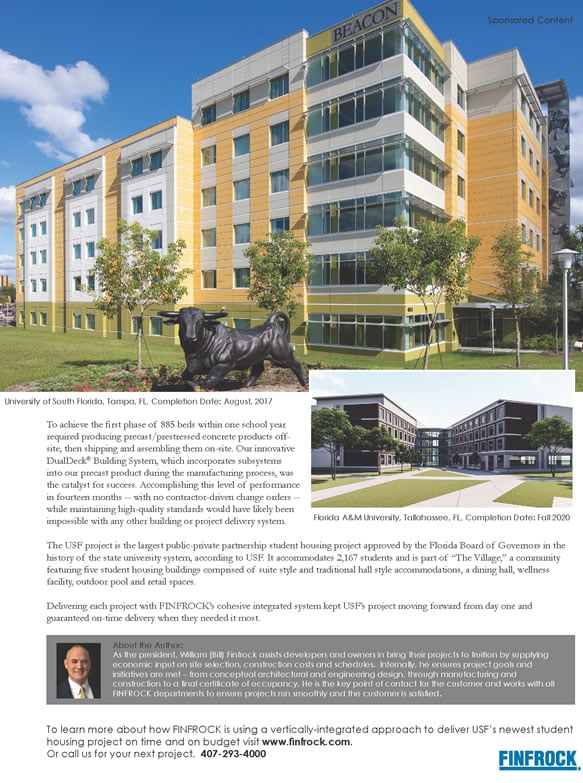April 2025 | Evan Williams
At a command center on its Jacksonville campus, Mayo Clinic physicians and bedside nurses visit with patients virtually in their homes. Doctors’ orders are fulfilled through a network of home health vendors that deliver medication, collect blood samples, deploy nurses for in-home visits and provide other on-site services; meanwhile, wearable devices monitor patients’ vital signs around the clock.
“(It’s) like a true medical ward in the hospital,” says Dr. Michael Maniaci, Mayo’s lead enterprise physician for Advanced Care at Home. “If you’re sick enough to be in the hospital, and are clinically stable, you can go to our home hospital program.”
Mayo and other Florida hospitals began admitting patients needing acute care into their homes to free up beds in 2020 during the COVID-19 emergency — and the care model has been expanding ever since. The most recent count shows that 140 health systems in 39 states, representing 378 hospital facilities, have hospital-at-home programs approved by the Centers for Medicare and Medicaid Services (CMS). Some hospitals now offer it to all but the sickest patients, including those requiring surgery, in limited geographic areas.
The movement has its roots in a 1990s pilot program spearheaded by John Hopkins geriatrician Bruce Leff. It was revived in 2020 with hospitals signing up for a waiver from CMS to receive payment from the federal insurance programs. Proponents of the virtual-hybrid care model point to an array of benefits including lower readmission rates, fewer hospital-related infections and potential cost savings.
The Mayo Clinic admitted just four patients to its hospital-at-home “ward” when it started in 2020. Since 2020, Mayo has cared for about 5,000 patients under the program, and it plans to continue expanding through its locations in Florida, Arizona, Wisconsin and Minnesota.
Other hospitals have set up similar programs. Doctors and nurses at the Cleveland Clinic monitor patients from a virtual command center in Vero Beach. Most of those patients are admitted to their in-home hospital via the emergency department, allowing them to bypass medical wards. Nurses and/or paramedics deliver inperson care, such as establishing IV lines or dispensing medication that doctors order remotely.
With both government and many private insurance companies now on board — and a preliminary CMS report to Congress largely verifying the benefits of acute care at home — hospitals continue to expand the reach of their programs.
“(We) are really kind of creating that infrastructure to spread hospital-at-home as broad and wide as we can,” says Dr. Peter Chang, senior vice president and chief transformation officer for Tampa General Hospital. “We know the more hospitals that have it, the greater the outcomes are going to continue to be, which would only support the continuation of hospital-at-home nationally.”
Chang says the service gives patients a “home field advantage” — the medical and psychological benefits of healing in a familiar setting. Some patients are especially happy to be home with their pets and other familiar surroundings. Hospitals have also reported lower readmission rates with home care. The 30-day rate for Tampa General’s hospital-at-home patients is about 5%, Chang says, compared to a 13.9% national average.
“(The hospital-at-home) model has been shown to increase patient satisfaction, reduce exposure to hospital-acquired infections and decrease confusion by allowing patients to recover in their familiar surroundings,” says Maura Nazario, vice president of clinical operations for AdventHealth home-based services. AdventHealth launched its hospital-at-home program in January based in Winter Park, with plans to grow it around other Florida locations.
Lingering Questions
Despite the momentum, hospital-at-home programs face ongoing challenges, including the need for Congress to extend the CMS waiver that allows hospitals to receive payments from federal insurance programs. For the second time in five years, Congress approved a temporary extension that, as of press time, was set to expire on March 31. A lapse could send current at-home patients back to traditional hospitals and slow efforts to build up home care programs.
“For all hospitals with active Acute Hospital Care at Home waivers, all inpatients must be discharged or returned to the hospital on March 31, 2025, in the absence of Congressional action to extend the initiative,” the CMS.gov website states. “CMS will no longer accept waiver requests for participation in the AHCAH initiative after March 1, 2025.”
Hospital leaders say there is bipartisan support for a long-term extension of the waiver, bolstered by CMS’s “Report on the Study of the Acute Hospital Care at Home Initiative.” The study was ordered by Congress to examine the performance of hospital-at-home programs since 2020. It verified that patients benefit from lower mortality rates, fewer hospital-acquired infections and readmission rates equal to or better than traditional hospitals.
While programs are growing quickly, the number of patients in hospital-at-home programs is still only a sliver of hospitals’ overall admissions.
There appear to be cost benefits too. The CMS study found a slightly longer length of stay for hospital-at-home patients, but “significantly” (22. 1%) lower Medicare spending on those patients in the month after they were discharged. A key reason, the study noted, was that the brick-and-mortar patients were more often discharged to a skilled nursing facility or hospice, whereas the patients hospitalized in their homes stayed at home, sometimes requiring traditional home services.
“(Hospital-at-home) programs generally save money,” says MaryJo Allen, chief nursing officer for the Brevard County-based nonprofit system Health First. “They reduce the costs associated with inpatient stays, such as facility fees, overhead and hospital-acquired conditions. For patients, there are fewer expenses related to transportation, meals and other hospital-related costs. However, initial investments in technology, staff training and infrastructure can be significant. Over time, the model proves to be cost-effective.”
The federal and state government have shown “overwhelming bipartisan support” for hospital-at-home programs, says Dr. Christopher Bucciarelli, vice president of ambulatory services and chief medical officer for BayCare, which serves West Central Florida. “A five-year extension to the program was approved unanimously (by) the House Ways and Means Committee (last) May, and we hope that Congress will act to extend hospital-at-home to give providers more certainty.”
Work Continues
More time and research are needed to verify the long-term financial viability, safety and efficacy of inpatient care at home when compared to a traditional hospital setting, says Dr. Richard Rothman, one of the founders of Cleveland Clinic’s hospital-at-home program and vice president and chief medical officer of its Indian River Hospital.
To that end, the Cleveland Clinic and Mayo Clinic partnered to create their Home-Based Care Consortium to compile research on the model’s financial viability and quality of care. It aims to inform government and commercial insurance payers on hospital-at-home’s viability and sustainability.
“(It) is the largest registry for patients hospitalized in the home — outside of government payer data — in the country,” Rothman says. “We want to… ensure that statistically, what we’re seeing anecdotally, is true. I think that’s the challenge … to ensure that we are tempering our excitement around hospital-at-home, despite the fact that we see so much potential in it, to give time for the clinical research to speak for the care delivery model in the future.”
Hospitals, meanwhile, are growing their programs at different rates. Some limit care to certain diagnoses or are starting a program in a small geographic area before expanding its reach. Some home environments, too, are not suitable for acute care.
“Reliable broadband and devices are essential for virtual monitoring, which can be a barrier for some patients,” says Health First CNO Allen. “Training clinicians for home-based care and ensuring sufficient workforce availability can be complex. Navigating payer systems and securing consistent funding remains a challenge.”
The programs also can present logistical challenges for health care systems as they recreate the hospital environment, with a combination of virtual and in-person care, across potentially hundreds of homes in any given service area.
“We’re really working on the technology, the software, the infrastructure of decentralized health care delivery,” says Mayo Clinic’s Maniaci, comparing it to the supply chain challenges faced by companies such as Federal Express and Amazon.













